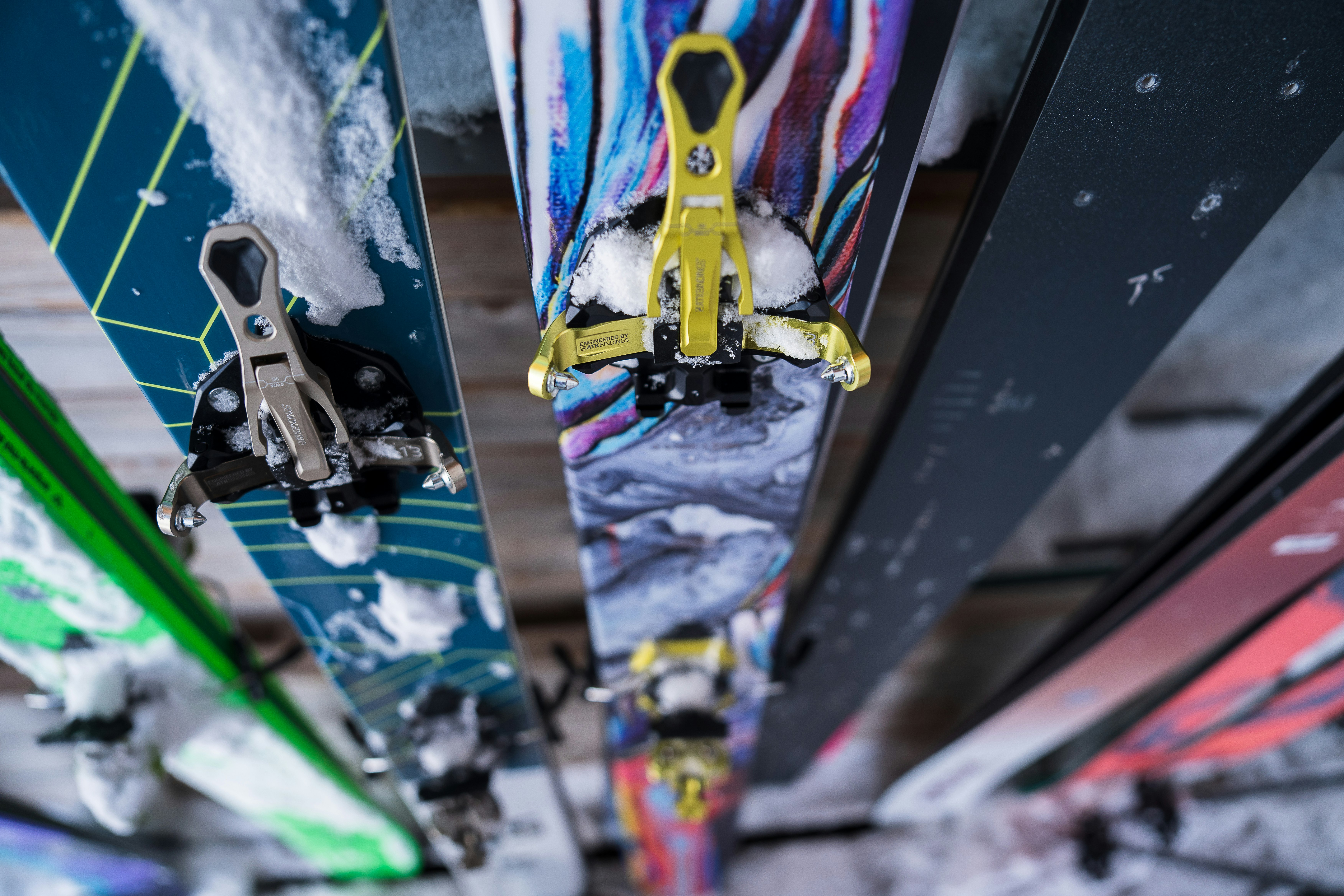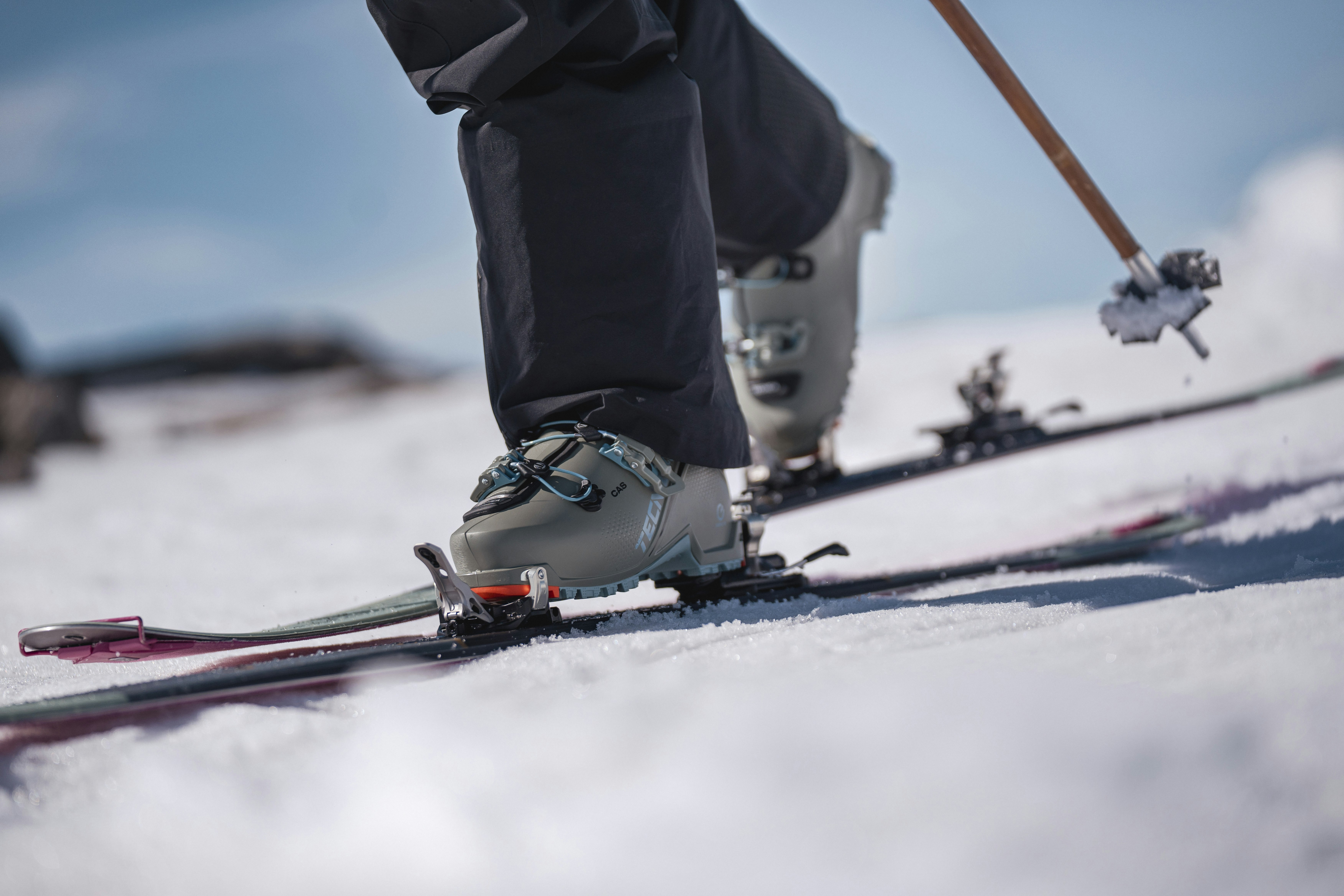Skimo bindings
They’re probably the element of your setup that’s evolved the most and seen the most crossover between disciplines. Which is why in general lighter bindings have adapted to make allowances for the trend for opting for wider skis, with hybrid drilling patterns and a greater selection of ski brakes. But the aspect that requires most scrutiny is the height difference between the front and rear pins.
- Author: Claudio Primavesi
- Photographer: Nicola DamonteAlberto StortiGiovanni DanieliElisa Bessega
Before any discussion on this, it’s worth remembering that, when using ski touring equipment at a resort, you’re legally required to have a system that prevents your skis disappearing off down the mountain if they accidentally come off, meaning either a leash or ski brake.
It may seem trivial, but regardless of the etymology of the term ski touring, the fact of the matter is we all use our setups on-piste at some point or other. Or almost. This reflection allows us to comment on one of the first questions that buyers ask in the shop: strap or brake? We prefer the latter, since the spring and stopping power of ski brakes have become more efficient. Clearly mishaps can happen, skis can get lost, forcing you to walk back down with a single ski stowed on your pack (raise your hand those who’ve never seen a tourer reduced to this). History teaches us that the most critical moment for losing a ski is when transitioning, and nobody can deny the effectiveness of the latest-generation brakes in this regard, except in those exceptional circumstances when only a ski crampon stands a chance of stopping even light gear.

Bindings are one of the segments that are undergoing the most exciting developments. A significant number of the models presented are new on the market, either completely or partially. The biggest driver for change is the quest for versatility, regarding usage and user. This means ever more hybrid drilling patterns are appearing (with hole pairs spaced further apart, like on the ATK Speed toe piece) or wider bases than previous versions (as is the case with the Marker ISI toe piece), which are better suited to skis that are 10-15 mm wider than those used just a few years ago on the same terrain. There are ever more complete mid-to-light models, and we don’t think it’s heresy to suggest these can function effectively in more demanding usage classes (we know this goes against something we’ve always maintained: better to be conservative when pairing models of different usage classes). Naturally, we mean sticking to the more forgiving models within the higher class (so the narrowest and least burly skis in that class). Read the individual technical details sheets carefully because each model has its own peculiarities that affect its uses.

Versatility rhymes with usability. There’s no doubt that ski touring has changed due to the increasing numbers of resort skiers entering the sport who seek reliable, complete and simple solutions. And it’s newcomers that will be the first to notice when something feels weird when they clip into an old-style binding that’s the direct descendent of the very first low-tech pin bindings. At the heart of this is something called drop. It’s not a commonly used technical term, we’ve borrowed it from the world of running shoes. Simply put, it’s the difference in height between the rear and front pins. The value can be measured in different ways and our preference is to measure it from the upper surface of the pins, which is after all where the boot insert actually rests. Regardless of how it’s measured, this height difference—the drop—does not change.

While with step-in piste bindings you ski essentially with your foot flat, the world of ski touring starts with drop values of around 20 mm.
The issue is much more complicated because there are only two factors that influence the ski and determine the minimum tilt: the forward lean of the cuff, usually factory set to around 12°, and the ramp angle, being the slight angle of the internal boot board, which is generally from 2 to 6 degrees. In ski touring everything is rendered much more complex, as many factors come into play when you already start from a more or less pronounced drop (most modern bindings have values lower than 10 mm, while race models can in some cases have a negative drop, meaning the heel pins are slightly higher than the toe pins). First among these is the boot board angle, which varies between boots. Then there’s the sole rocker curvature, and the abovementioned forward lean and ramp angle. This is without considering other factors, like the impact of the varying flexibility of the foam used in the liner, and if we really want to complicate matters, also calf shape and the varying height of the attachment point of the twin muscles of the calf itself. You’ll see that, even with low-drop bindings (meaning all the latest models developed) there are many variables involved, and they can significantly influence your skiing, especially if you have smaller feet. Our advice is to choose a good dealer to evaluate the implications of your setup carefully—if necessary also modifying your boot— and also to get a good ski instructor to take a look at your setup during your first outings. Start out by selecting a binding with a low drop value.
Share this article

